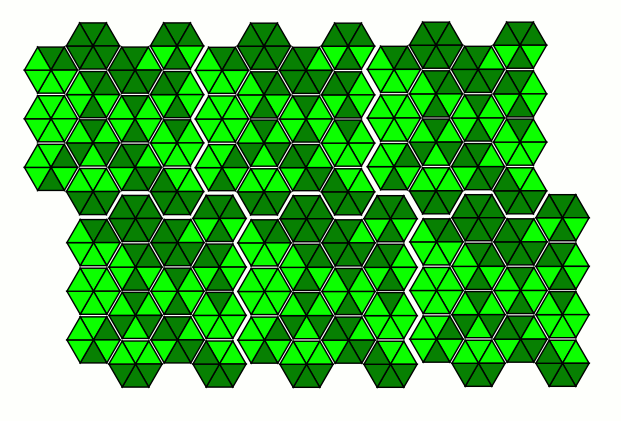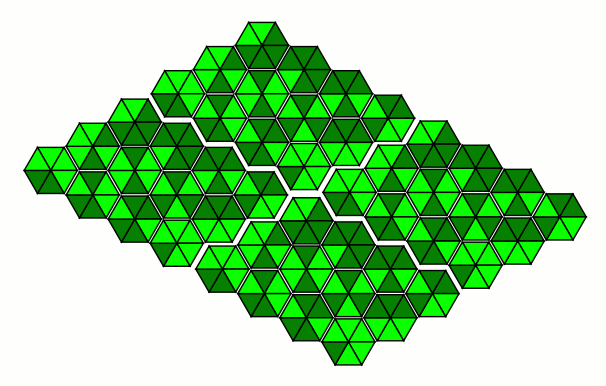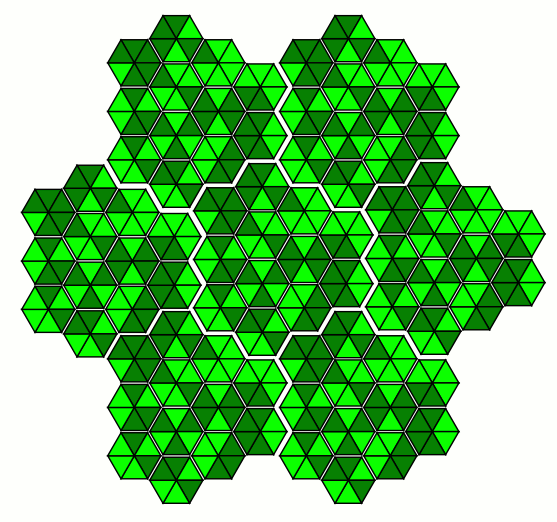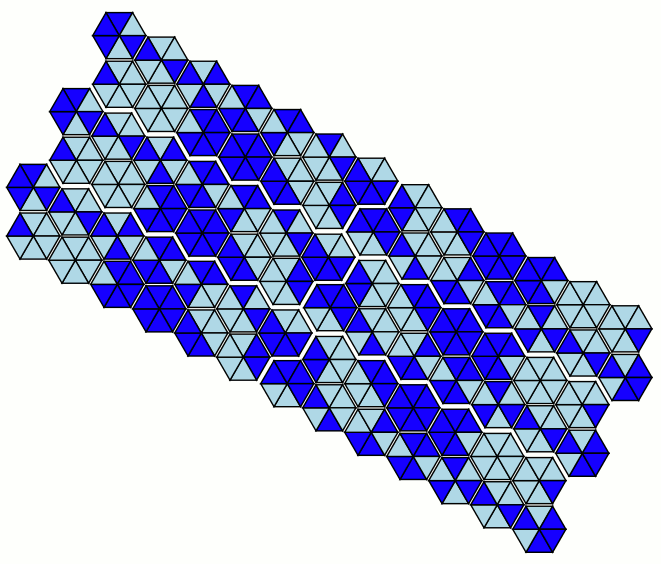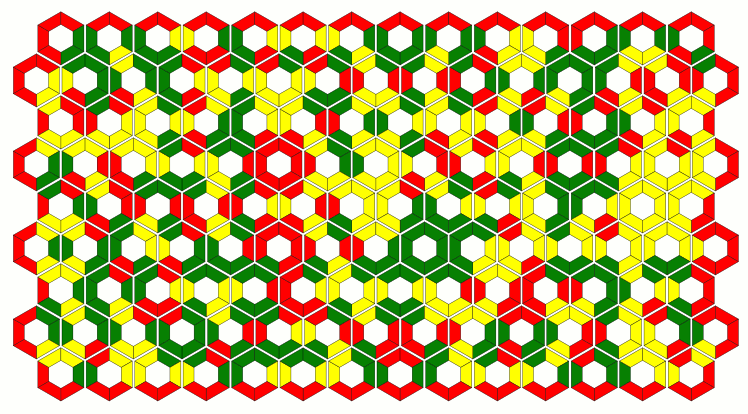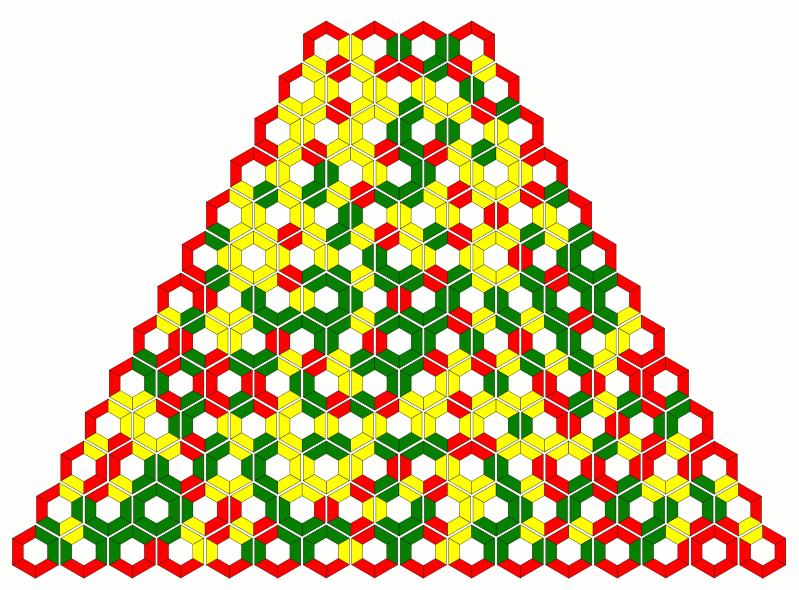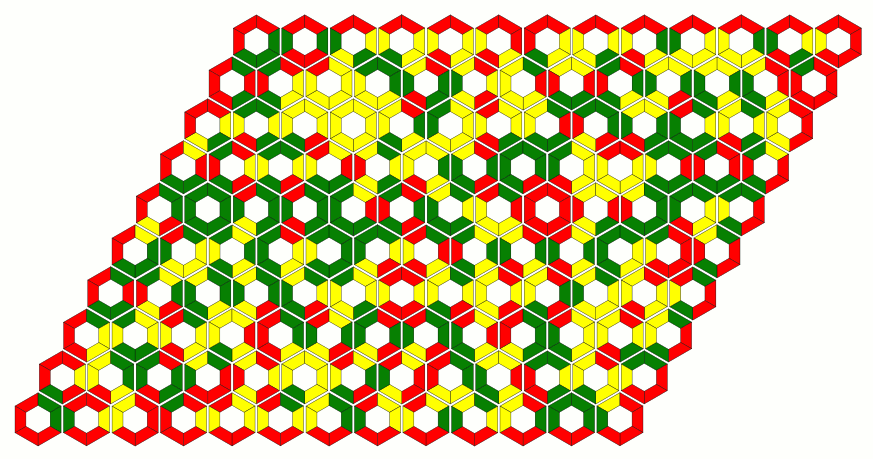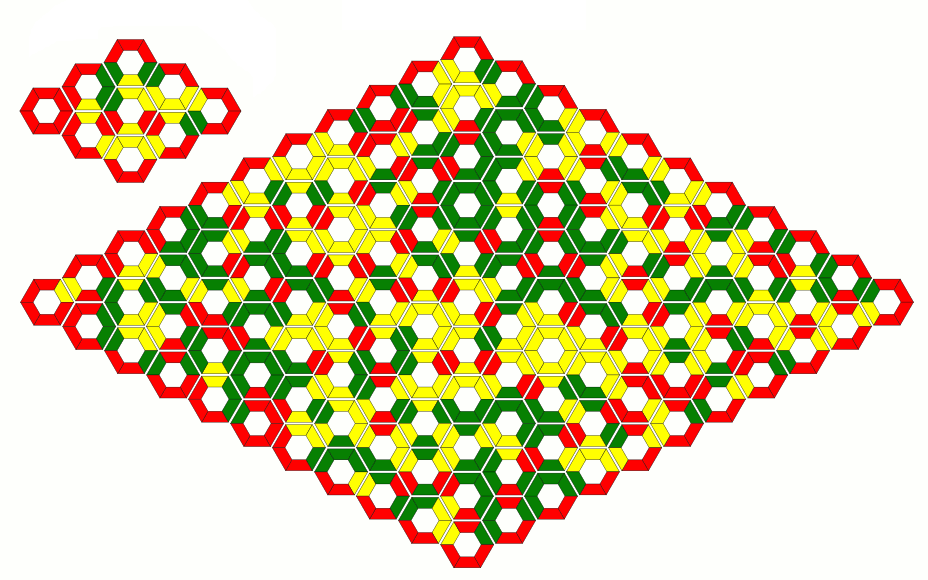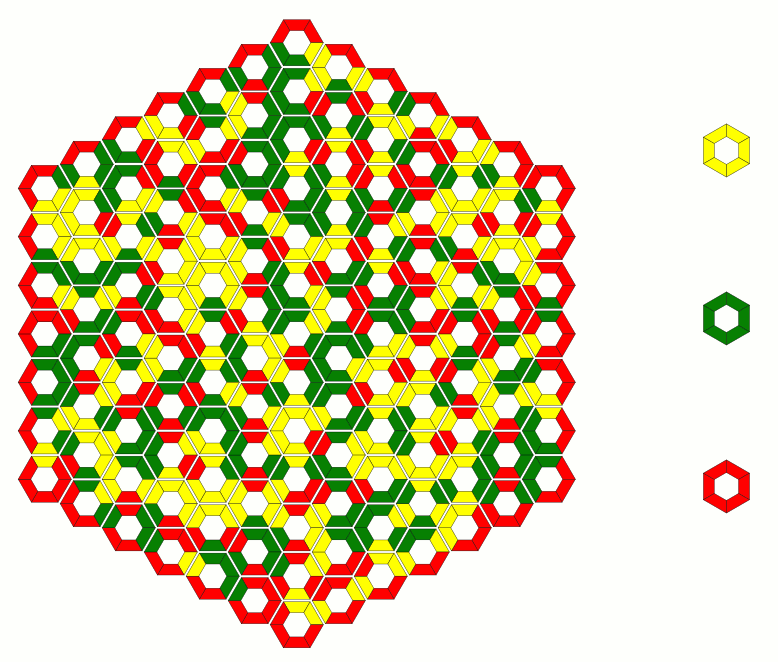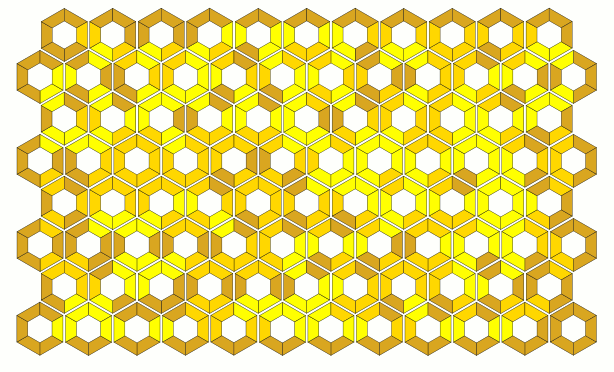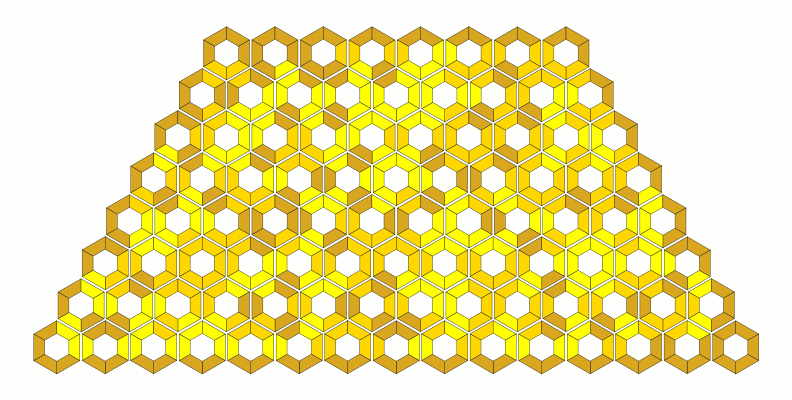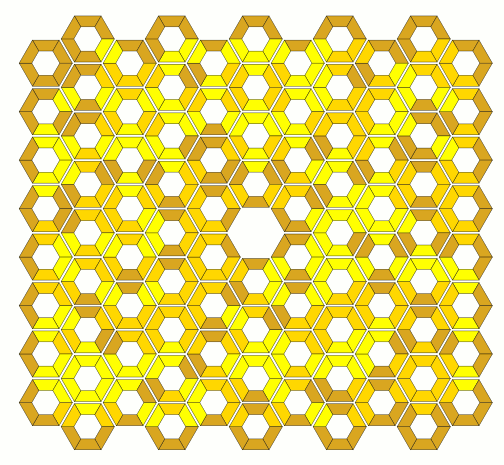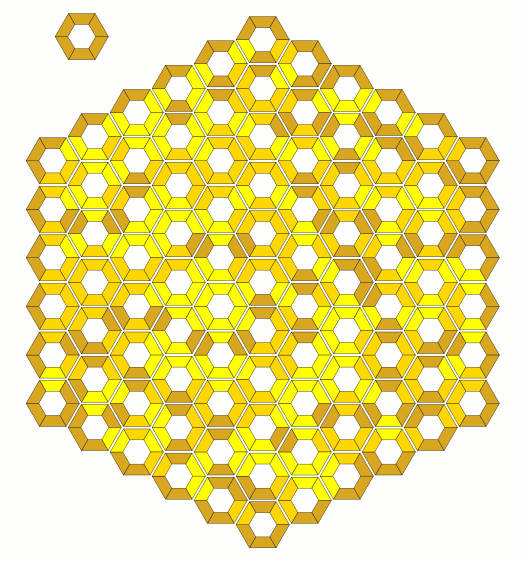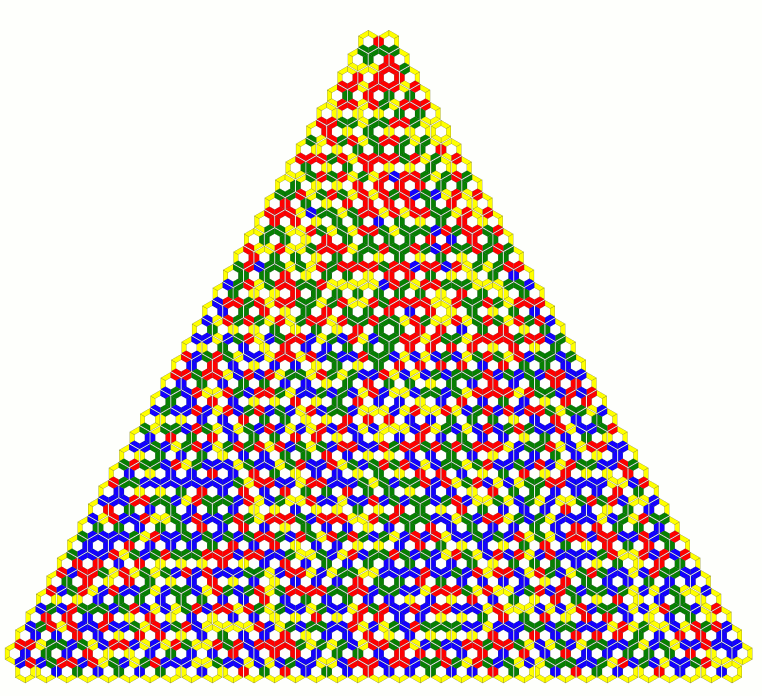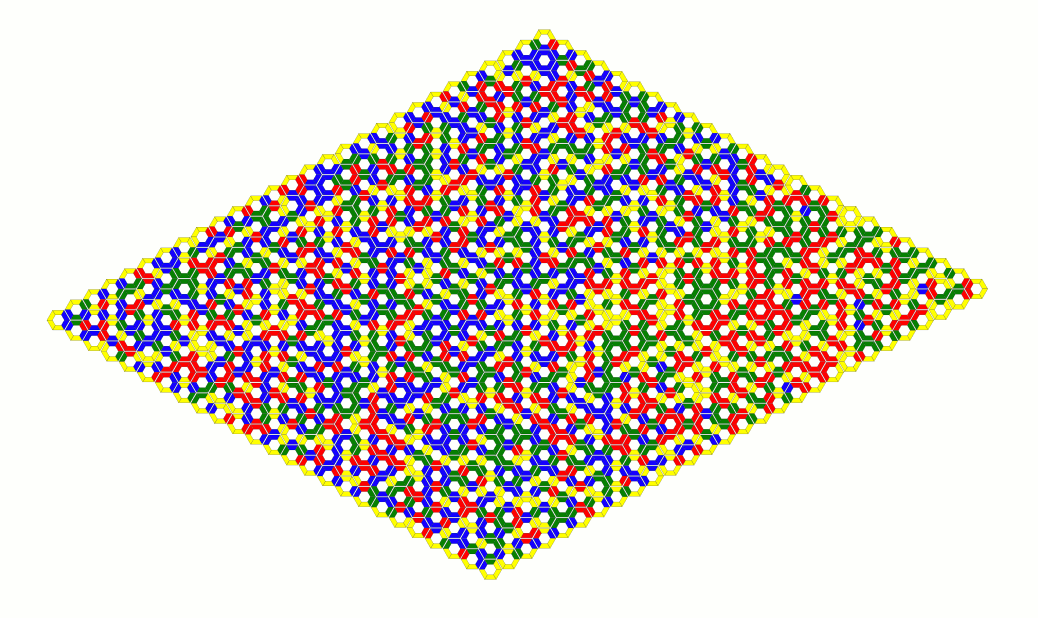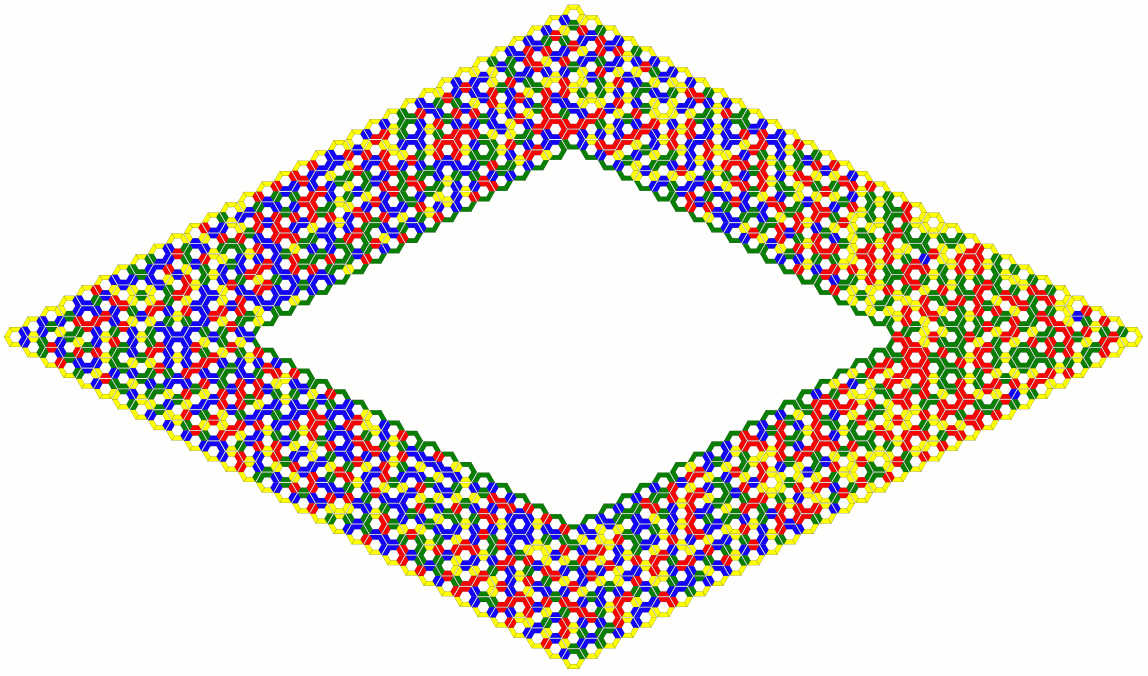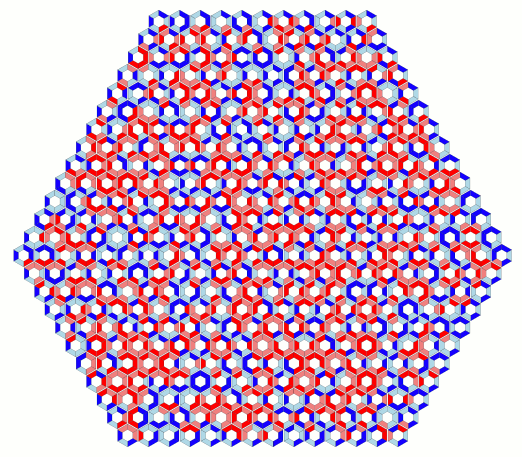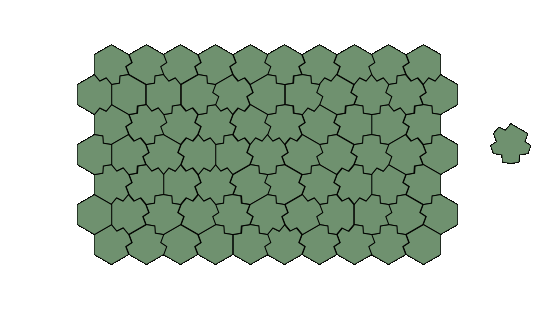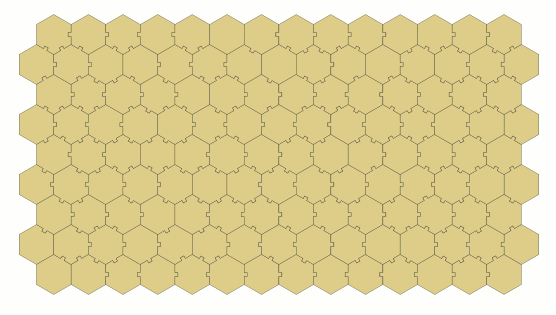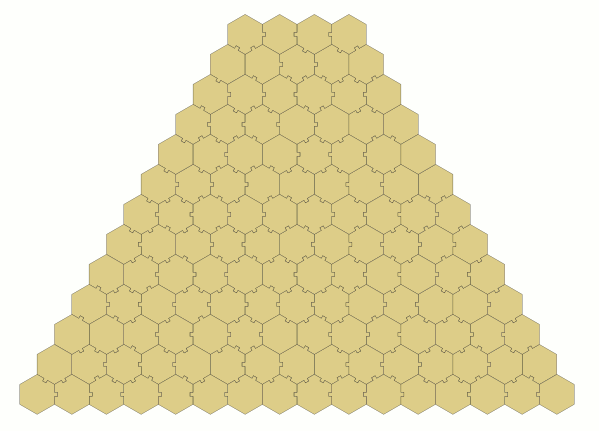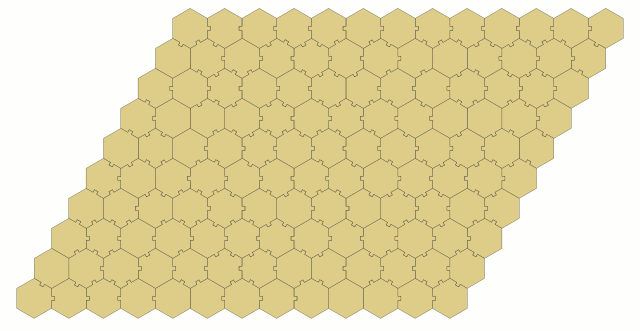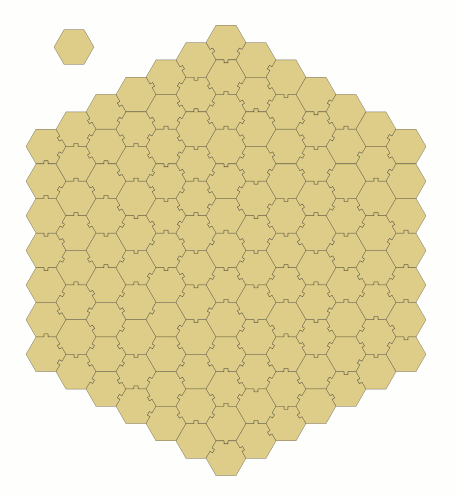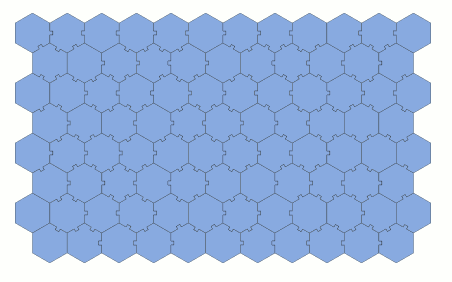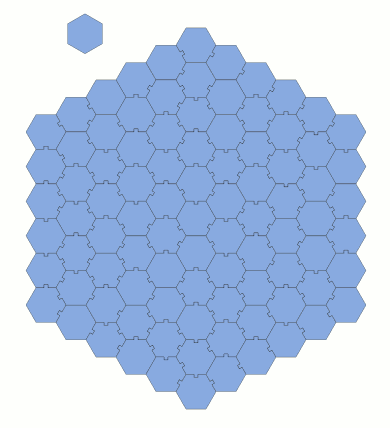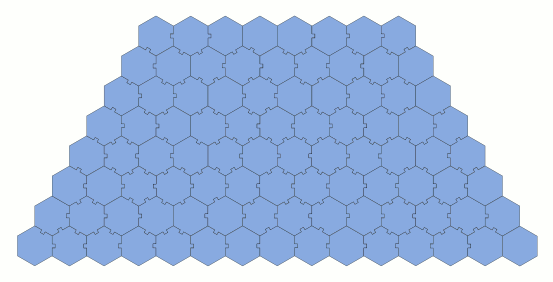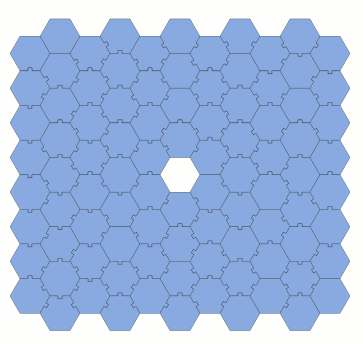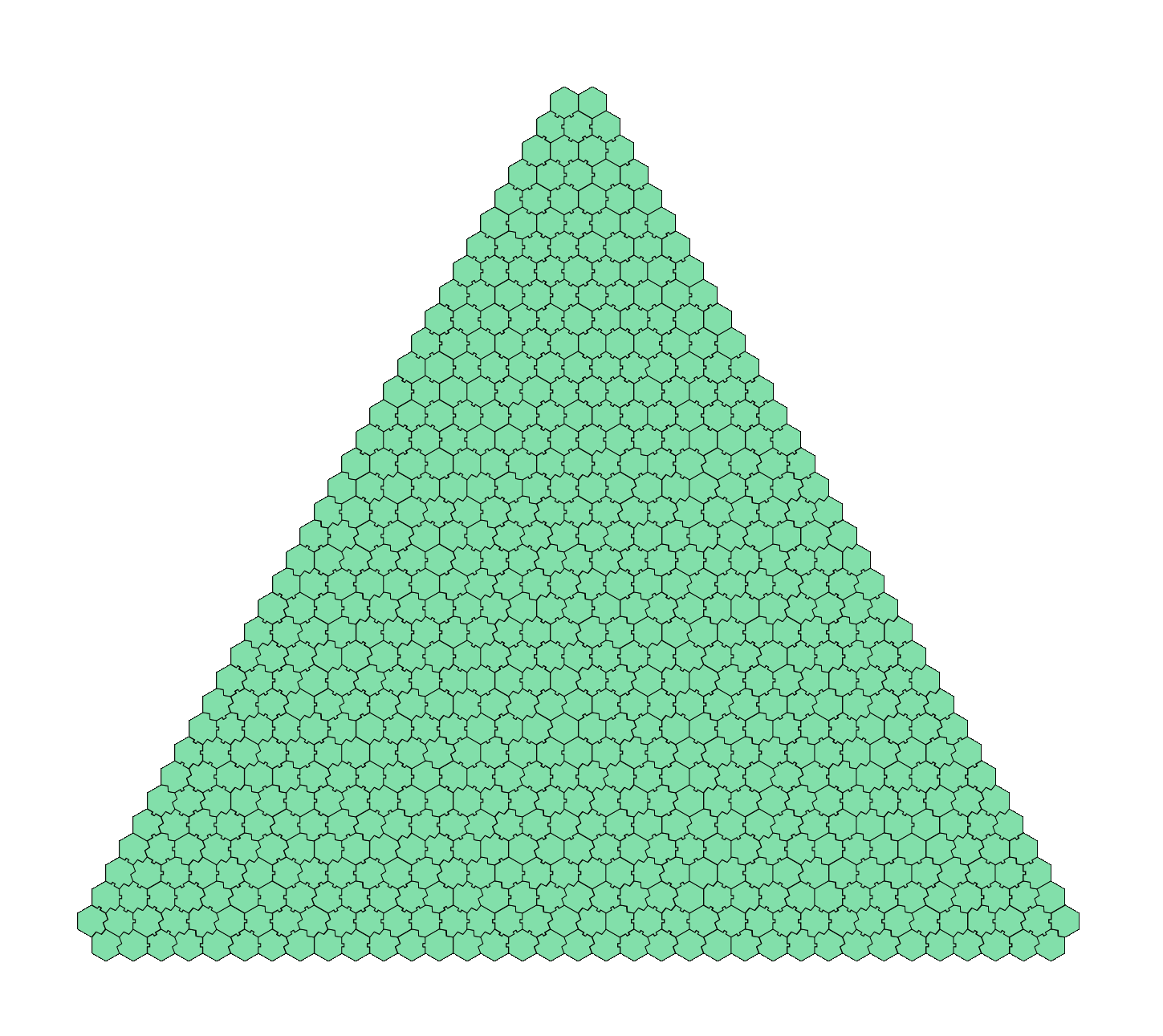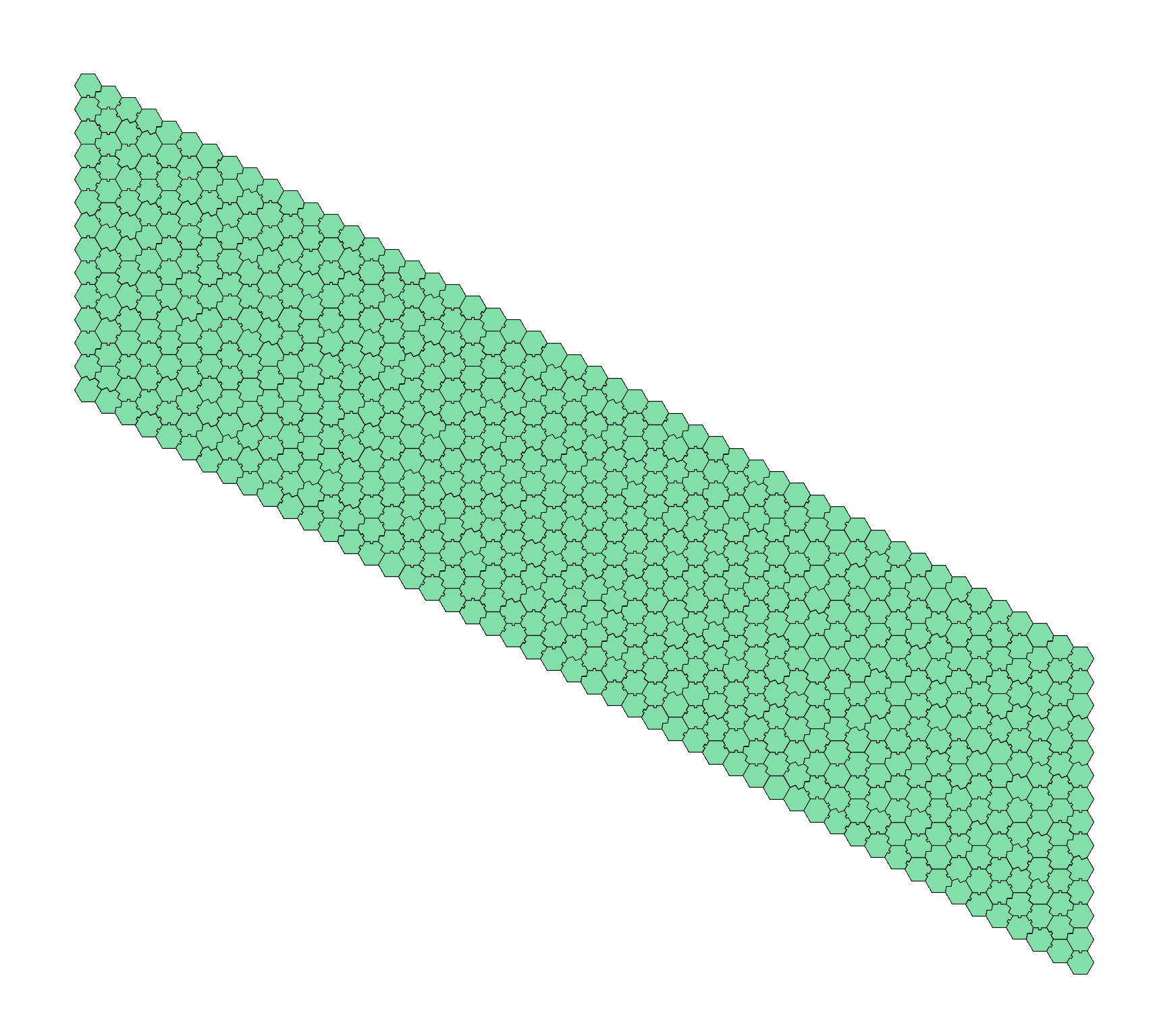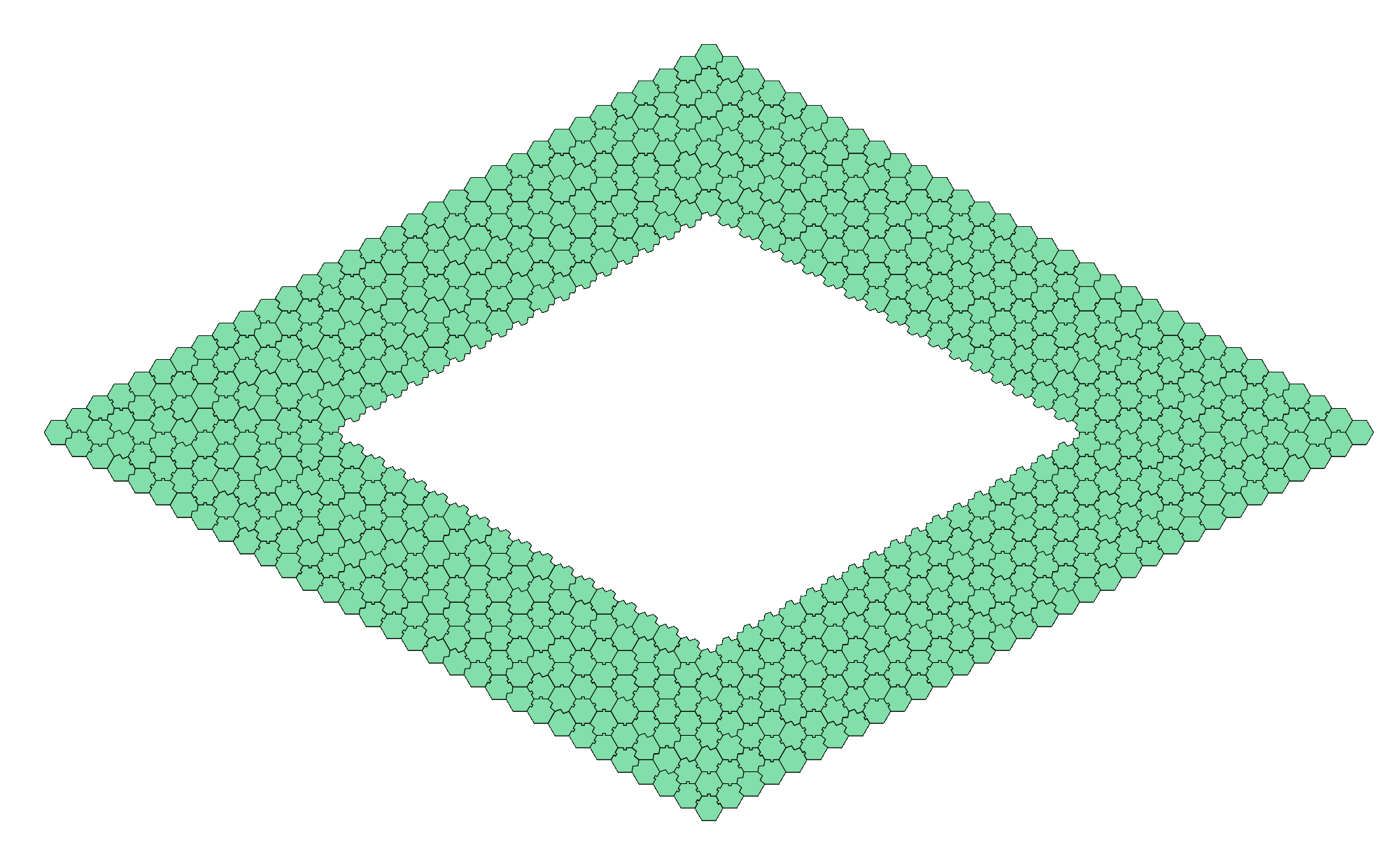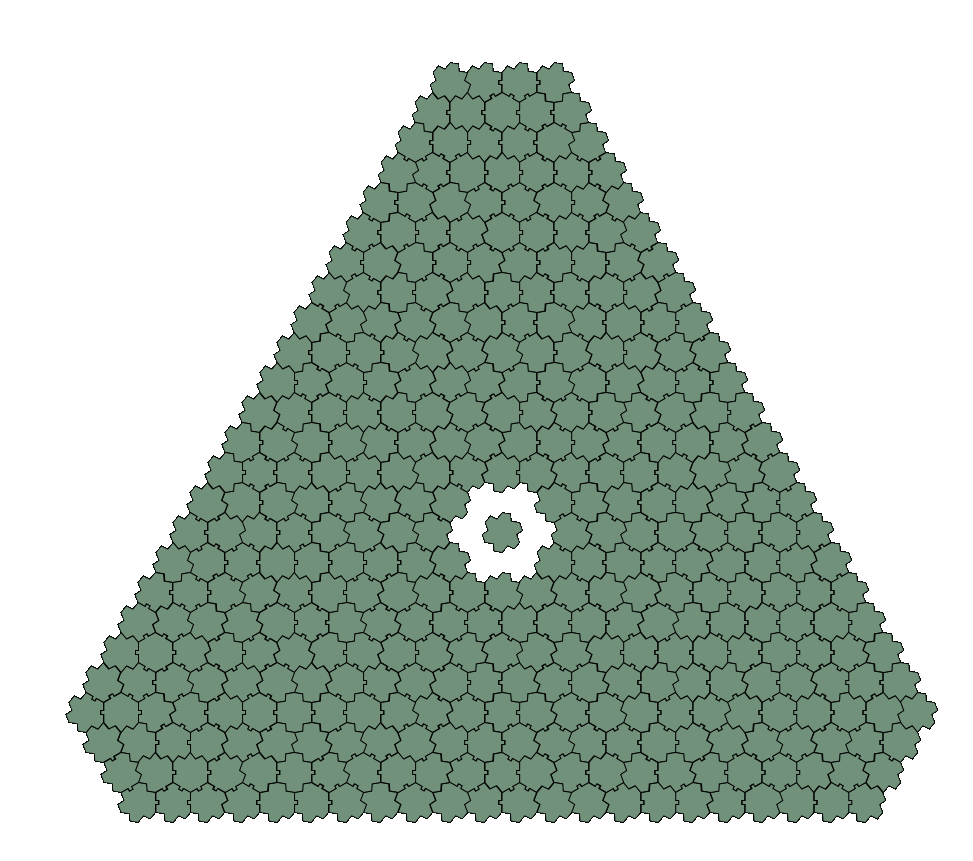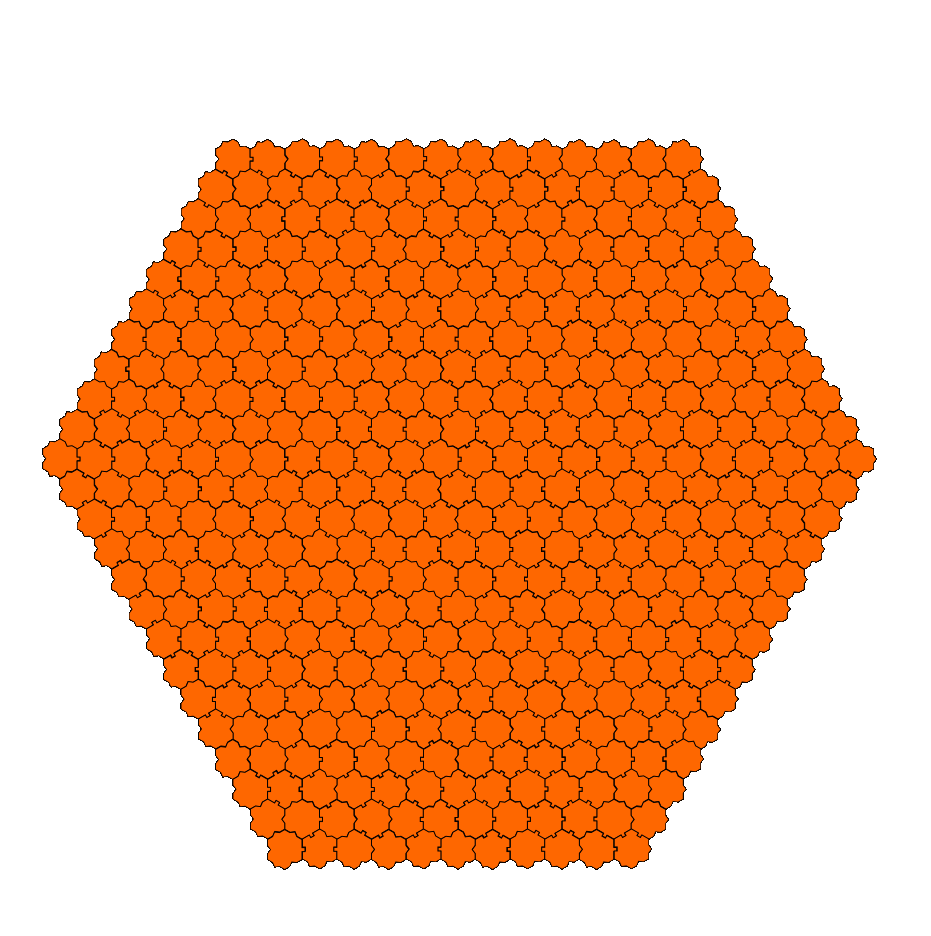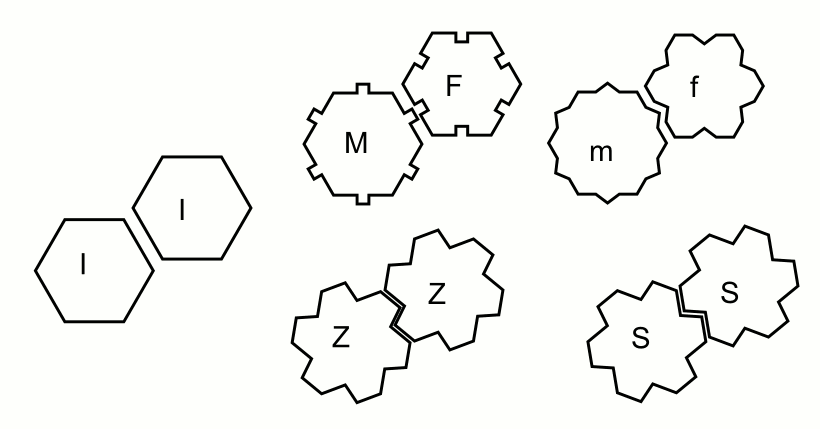
| Colors | One-sided Pieces | Two-sided Pieces | |||
|---|---|---|---|---|---|
| Number | Examples | Number | Examples | ||
| 2 | 14 | Tesselation of the Plane | 13 | Tesselation of the Plane | |
| 3 | 130 | Rectangle, Trapezium, 13x10 Parallelogram, Two Rhombs, Hexagon |
92 | Rectangle, Trapezium, Rectangle with Hole, Hexagon |
|
| 4 | 700 | Truncated Triangle, 28x25 Parallelogram, 50x14 Paralellogram, Rhomb Ring |
430 | Truncated Triangle | |

| One-sided Pieces | Two-sided Pieces | ||||
|---|---|---|---|---|---|
| Edge Shapes | Number | Examples | Edge Shapes | Number | Examples |
| ISZ | 130 | no difference to colored pieces | ISZ | 74 | Rectangle |
| IFM | 130 | Rectangle, Trapezium, 13x10 Parallelogram, Two Rhombs, Hexagon |
IFM | 92 | Rectangle, Trapezium, Rectangle with Hole, Hexagon |
| ISFM | 700 | Truncated Triangle, 28x25 Parallelogram, 50x14 Paralellogram, Rhomb Ring |
SZFM | 382 | Truncated Triangle with Hole |
| FMfm | 430 | Truncated Triangle | |||
